Howdy, Stranger!
It looks like you're new here. If you want to get involved, click one of these buttons!
Quick Links
A Brief History of the Gold Dollar, Part 1
The concept of a gold dollar is as old as the earliest proposals for the first United States mint. In a report to the House of Representatives in January 1791, Alexander Hamilton recommended that the mint issue dollar coins in silver and gold. Ultimately the Coinage Act of 1792 introduced the United States dollar as a large silver coin that was patterned after the Spanish milled eight reales. Under the bimetallic system, the dollar was defined as either 372.25 grains of pure silver or 24.75 grains of pure gold, but the act did not authorize a gold dollar coin.
In 1804 President Thomas Jefferson suspended the coinage of the silver dollar and the ten dollar gold piece in an effort to stem the export of gold and silver from the United States. Surprisingly the U.S. would not issue a one dollar coin in any form for more than 30 years. In the mean time a private minter would be the first to issue a dollar in gold.
The Bechtler Gold Dollars
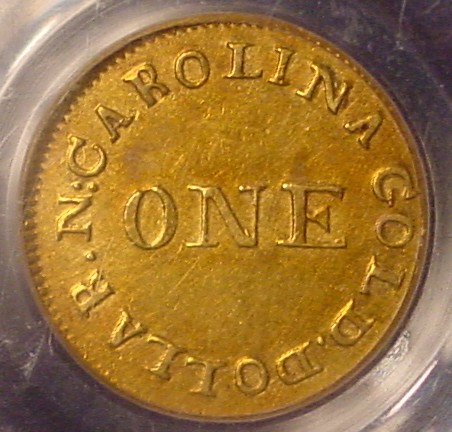
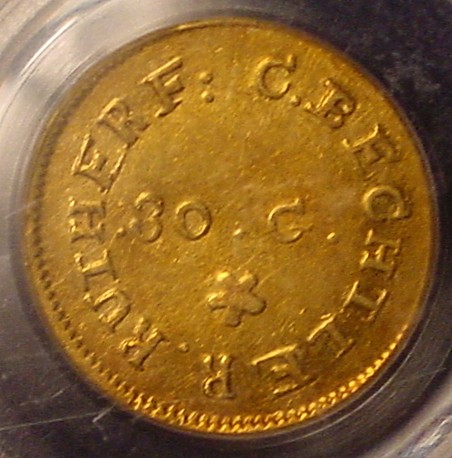
The first gold dollars minted in the United States were struck by a private mint. Around 1832 Christopher Bechtler, a German immigrant and metallurgist, struck the first gold dollars at his facility in Rutherfordton, North Carolina. Bechtler established his mint in the gold producing regions of western North Carolina and northern Georgia to convert raw ore into a practical coinage. Bechtler also produced gold coins in the two and a half and five-dollar denominations.
The Bechtler coinage planted a seed in the minds of Federal Government officials. After a hiatus of more than 30 years, the treasury department addressed the issue of resuming the coinage of a dollar coin. The silver dollar was the odds-on favorite, but Secretary of the Treasury, Levi Woodbury, asked Mint Director, Robert Maskell Patterson, to develop a design for a gold dollar.
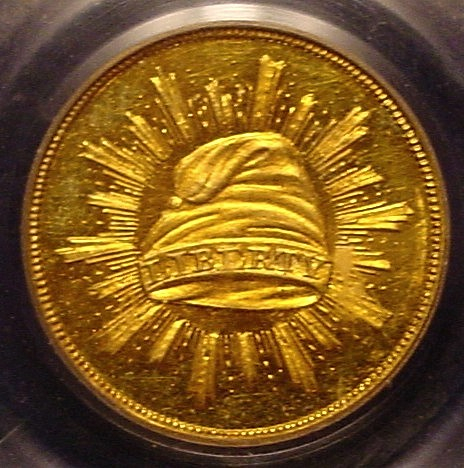
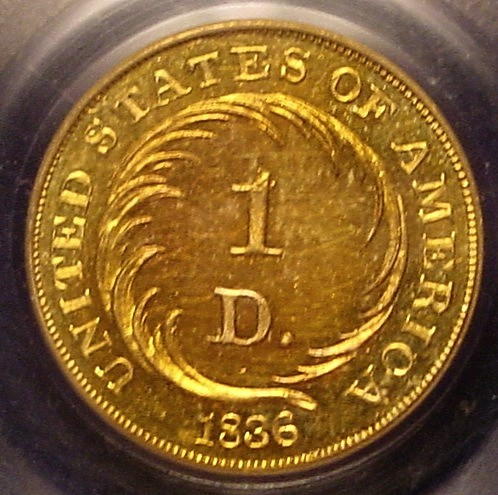
A Mexican 8 reale coin from the period.
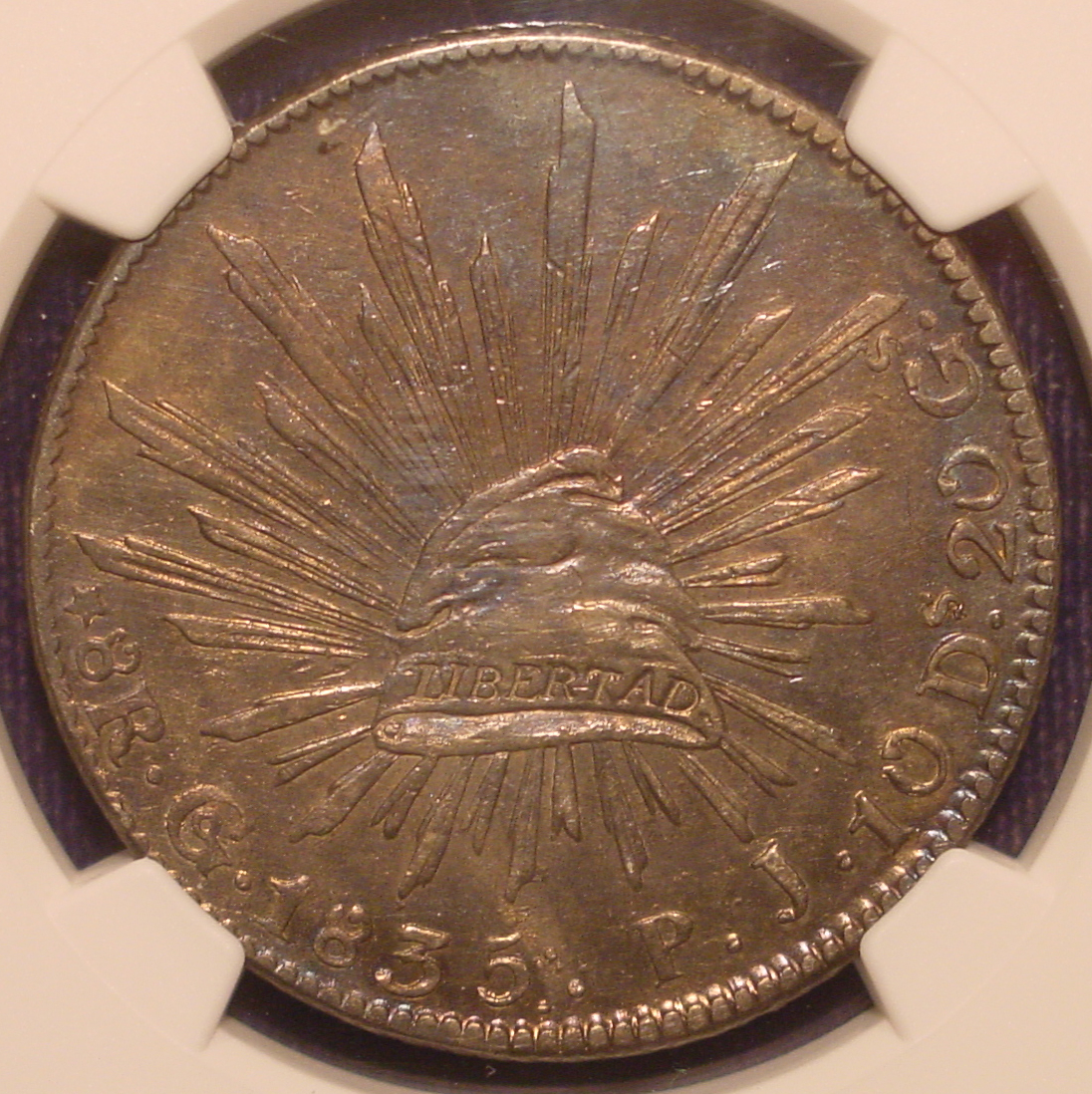
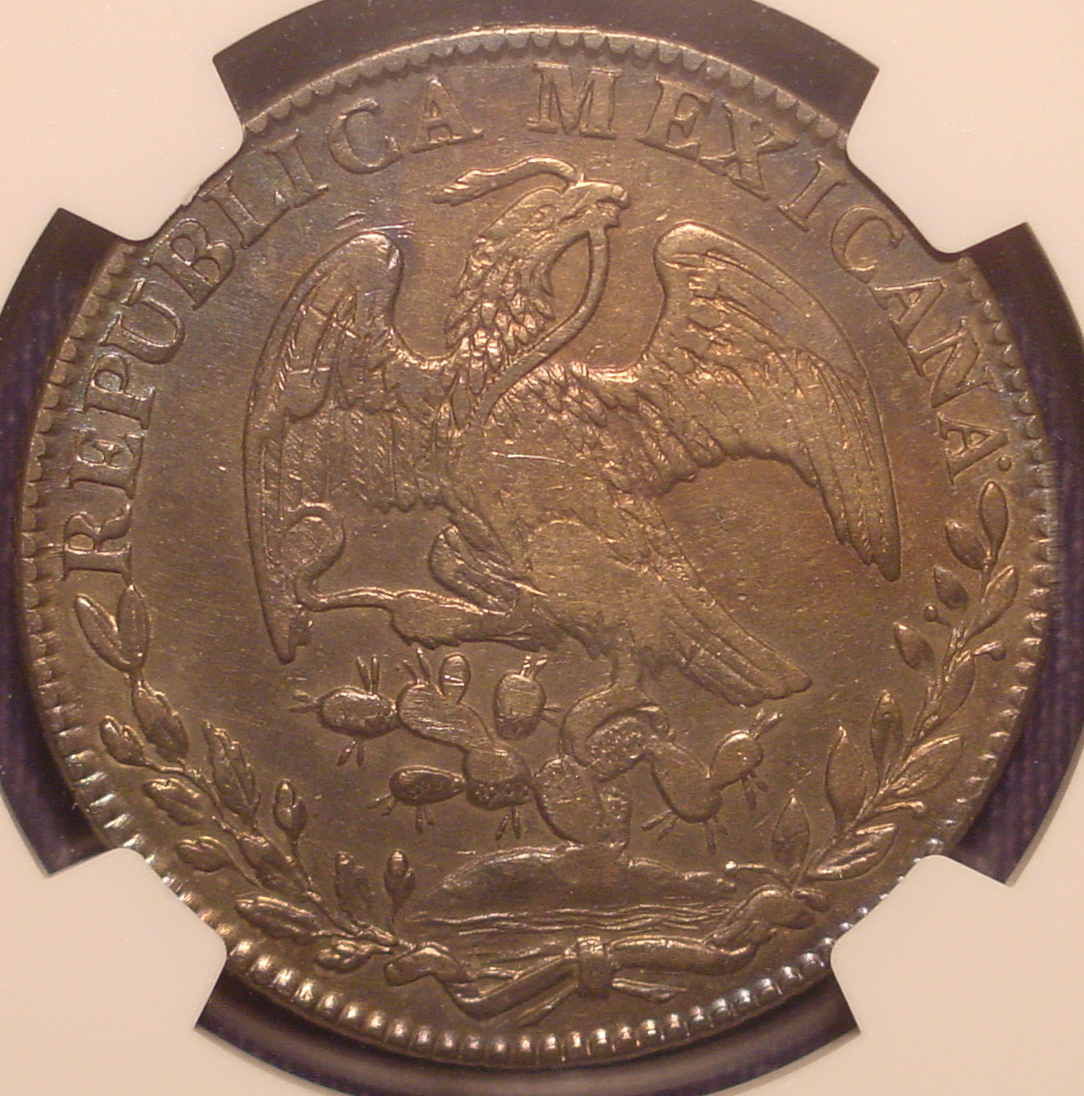
Patterson opposed the idea because he felt that tiny gold coins, like a gold dollar, were a hallmark of a second rate nation and would cast the United States in a negative light. Nonetheless Patterson obeyed his boss’s request and instructed Mint Engraver, Christian Gobrecht, to produce a set of dies for the tiny gold coin. Gobrecht obviously borrowed his design from the contemporary Mexican coinage of the period and produced a motif that featured a liberty cap surrounded by rays. (Pictured on page 387 of the 2019, 72ud Edition of the Red Book.) As expected the silver dollar won the day, and the gold dollar never got beyond the pattern coin status.
The Gold Dollar
The next push for a gold dollar coin was successful. In January 1848 James Marshall discovered gold at Sutter’s Point, California. The first shipment of California gold reached the east coast of the United States in December. The California Gold rush greatly increased the supply of gold in the United States. The new flow of gold prompted Congress to authorize two new denominations, the twenty dollar gold piece or double eagle and the gold dollar.
The rational for authorizing the largest and smallest U.S. gold coins in the same piece of legislation was political. Although it is little remembered today, the first gold rush in the United States occurred in the Carolinas and Northern Georgia in the late 1820s. In 1836 Congress authorized the construction of U.S. mints in Charlotte, North Carolina and Dahlonega, Georgia, which were communities that were located near the gold fields.
After southern gold production peaked in the mid 1840s, it went into a steady decline. Some were questioning the practicality the two small southern mints given their low outputs. Southern politicians believed that the gold dollar provided a way for those two mints to spread the southern gold production over larger number of coins. That would increase the Charlotte and Dahlonega Mints’ mintage totals and help to justify their continued existence.
James Longacre Designs the Gold Dollar
The responsibility for designing the gold dollar and making the dies fell to Chief Mint Engraver, James Longacre. Longacre was a skilled printing plate engraver, but he had had limited experience with producing coin dies. He had made dies for existing designs, but he had never produced dies for an entirely new motif. The tiny gold dollar would have been a challenge for any die maker, but for Longacre, it was especially difficult.
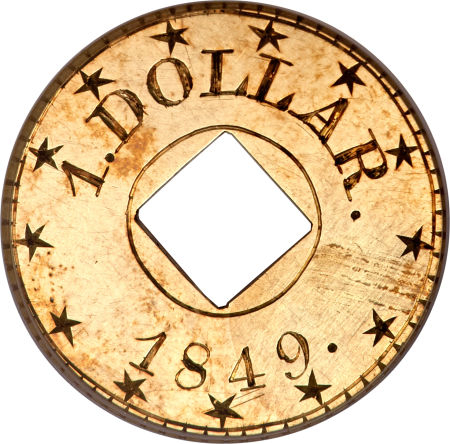
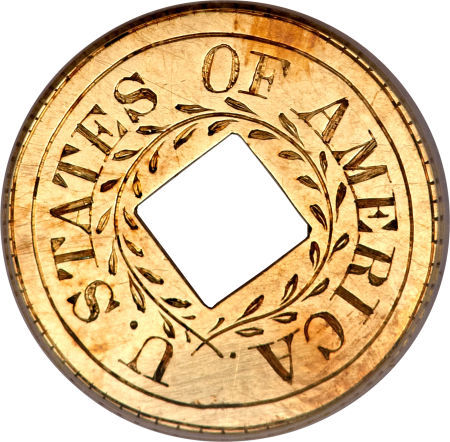
Longacre hand engraved the first gold dollar patterns which were round coins with a square hole in the center. Then he set to work making dies for the one and twenty-dollar gold pieces. The project went slowly, and may have been complicated by other mint employees who sabotaged his work.
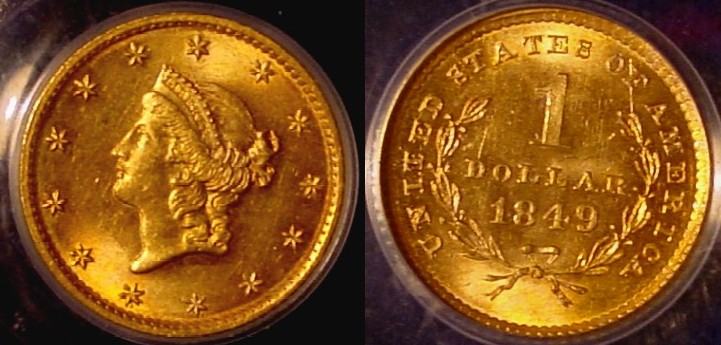
Finally Longacre produced a set of dies that collectors now call the “open wreath, no L” 1849 gold dollars. The “L” referred to Longacre’s initial, which he later added to the base of Ms. Liberty’s bust on subsequent dies. The “L” appeared more famously on the 1864-L Indian Cent. It has been claimed that only 1,000, 1849 no L gold dollars were made, but more recent studies have concluded that the mintage was actually 10,000 pieces. This first made for circulation gold dollar is fairly common, even in Mint State because many were saved as souvenirs as the first of their kind.
Longacre continued to have issues with the dies for the twenty dollar gold piece. The production of circulation strikes was delayed because the relief of the bust of Ms. Liberty, which matched the obverse of the gold dollar, was said to be too high. The unique 1849 double eagle is part of the national coin collection which is held by the Smithsonian Institute.
The unique 1849 $20 gold piece that is held by the Smithsonian in Washington, DC. Photos courtesy of the Smithsonian.
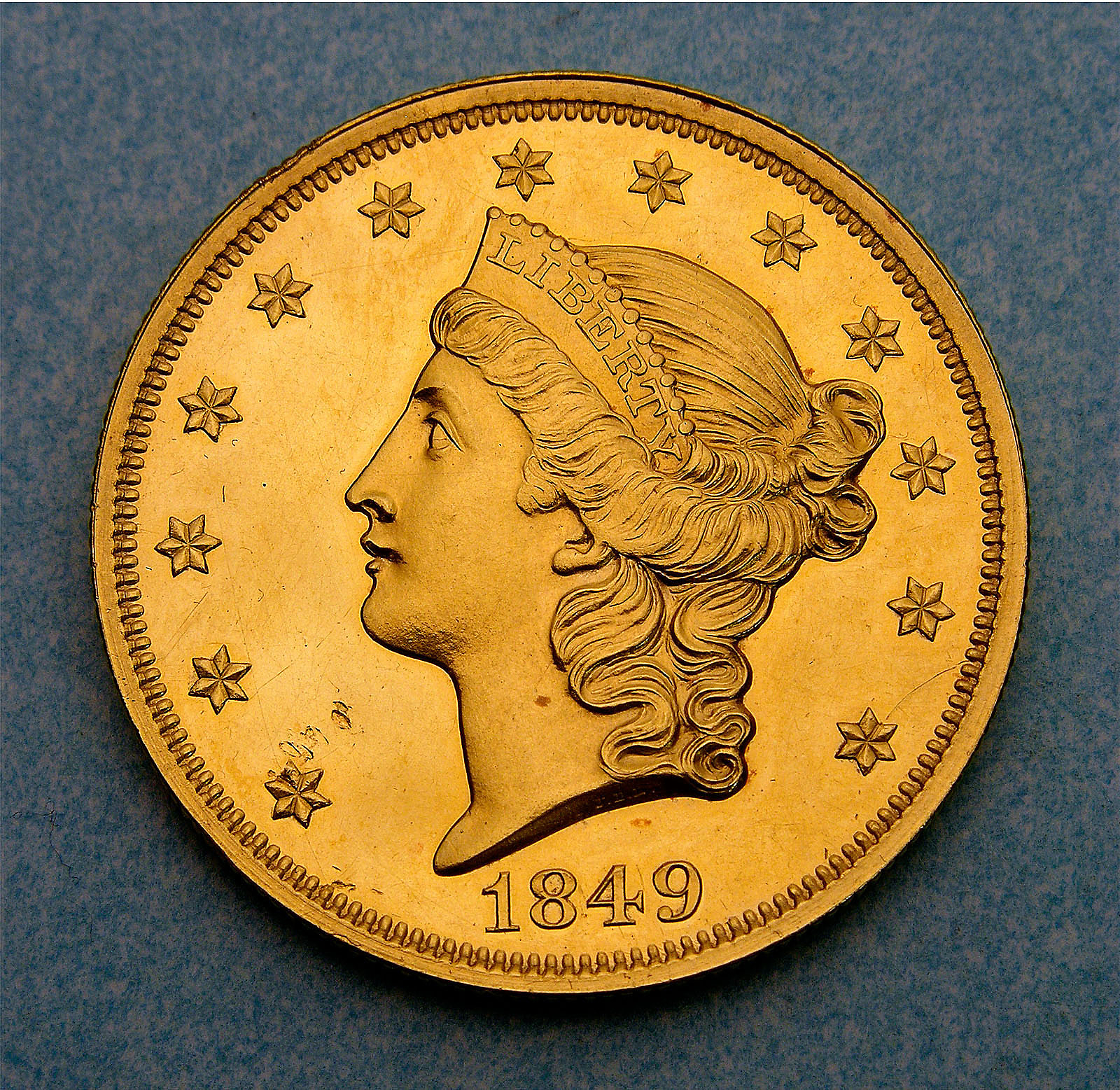
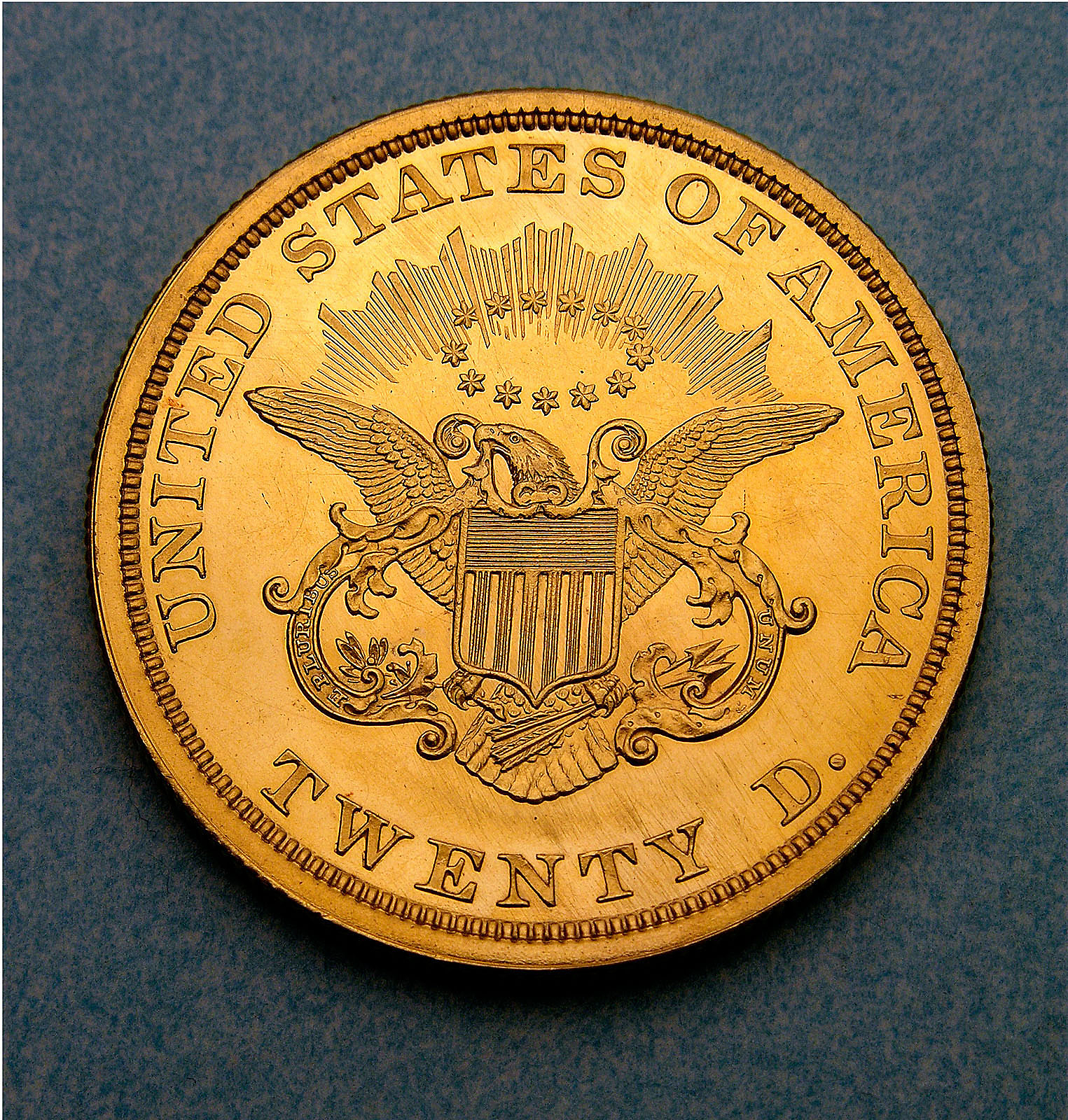
In 1804 President Thomas Jefferson suspended the coinage of the silver dollar and the ten dollar gold piece in an effort to stem the export of gold and silver from the United States. Surprisingly the U.S. would not issue a one dollar coin in any form for more than 30 years. In the mean time a private minter would be the first to issue a dollar in gold.
The Bechtler Gold Dollars


The first gold dollars minted in the United States were struck by a private mint. Around 1832 Christopher Bechtler, a German immigrant and metallurgist, struck the first gold dollars at his facility in Rutherfordton, North Carolina. Bechtler established his mint in the gold producing regions of western North Carolina and northern Georgia to convert raw ore into a practical coinage. Bechtler also produced gold coins in the two and a half and five-dollar denominations.
The Bechtler coinage planted a seed in the minds of Federal Government officials. After a hiatus of more than 30 years, the treasury department addressed the issue of resuming the coinage of a dollar coin. The silver dollar was the odds-on favorite, but Secretary of the Treasury, Levi Woodbury, asked Mint Director, Robert Maskell Patterson, to develop a design for a gold dollar.


A Mexican 8 reale coin from the period.


Patterson opposed the idea because he felt that tiny gold coins, like a gold dollar, were a hallmark of a second rate nation and would cast the United States in a negative light. Nonetheless Patterson obeyed his boss’s request and instructed Mint Engraver, Christian Gobrecht, to produce a set of dies for the tiny gold coin. Gobrecht obviously borrowed his design from the contemporary Mexican coinage of the period and produced a motif that featured a liberty cap surrounded by rays. (Pictured on page 387 of the 2019, 72ud Edition of the Red Book.) As expected the silver dollar won the day, and the gold dollar never got beyond the pattern coin status.
The Gold Dollar
The next push for a gold dollar coin was successful. In January 1848 James Marshall discovered gold at Sutter’s Point, California. The first shipment of California gold reached the east coast of the United States in December. The California Gold rush greatly increased the supply of gold in the United States. The new flow of gold prompted Congress to authorize two new denominations, the twenty dollar gold piece or double eagle and the gold dollar.
The rational for authorizing the largest and smallest U.S. gold coins in the same piece of legislation was political. Although it is little remembered today, the first gold rush in the United States occurred in the Carolinas and Northern Georgia in the late 1820s. In 1836 Congress authorized the construction of U.S. mints in Charlotte, North Carolina and Dahlonega, Georgia, which were communities that were located near the gold fields.
After southern gold production peaked in the mid 1840s, it went into a steady decline. Some were questioning the practicality the two small southern mints given their low outputs. Southern politicians believed that the gold dollar provided a way for those two mints to spread the southern gold production over larger number of coins. That would increase the Charlotte and Dahlonega Mints’ mintage totals and help to justify their continued existence.
James Longacre Designs the Gold Dollar
The responsibility for designing the gold dollar and making the dies fell to Chief Mint Engraver, James Longacre. Longacre was a skilled printing plate engraver, but he had had limited experience with producing coin dies. He had made dies for existing designs, but he had never produced dies for an entirely new motif. The tiny gold dollar would have been a challenge for any die maker, but for Longacre, it was especially difficult.


Longacre hand engraved the first gold dollar patterns which were round coins with a square hole in the center. Then he set to work making dies for the one and twenty-dollar gold pieces. The project went slowly, and may have been complicated by other mint employees who sabotaged his work.

Finally Longacre produced a set of dies that collectors now call the “open wreath, no L” 1849 gold dollars. The “L” referred to Longacre’s initial, which he later added to the base of Ms. Liberty’s bust on subsequent dies. The “L” appeared more famously on the 1864-L Indian Cent. It has been claimed that only 1,000, 1849 no L gold dollars were made, but more recent studies have concluded that the mintage was actually 10,000 pieces. This first made for circulation gold dollar is fairly common, even in Mint State because many were saved as souvenirs as the first of their kind.
Longacre continued to have issues with the dies for the twenty dollar gold piece. The production of circulation strikes was delayed because the relief of the bust of Ms. Liberty, which matched the obverse of the gold dollar, was said to be too high. The unique 1849 double eagle is part of the national coin collection which is held by the Smithsonian Institute.
The unique 1849 $20 gold piece that is held by the Smithsonian in Washington, DC. Photos courtesy of the Smithsonian.




Comments
The entire mintage was likely hoarded by an investor(s) because it was the very first U.S. gold dollar, had a tiny mintage, was the only gold dollar without the "L", and used actual California Gold Rush gold. The fact that almost all known examples are mint state (or close to it) seals the deal for the aforementioned hoarding, as nearly all were put aside and not circulated (hence the high survival rate).
Oh no, another numismatic study that uses the usual blue collar methodology. Sorry, it could not possibly debunk the mint director's own records.
In fact, you could argue that the No L is actually a pattern due to its unique, precursor design and microscopically small mintage.
FYI, if Breen did not put a "+" (plus sign) after the mintage figure, it is the mint-professed mintage. But some of his "+" mintage estimates seem way off, now that we have TPG population data to analyze (Breen did not).
I agree with your contention that pcgscoinfacts.com can be way off on their survivor estimates, LOL.